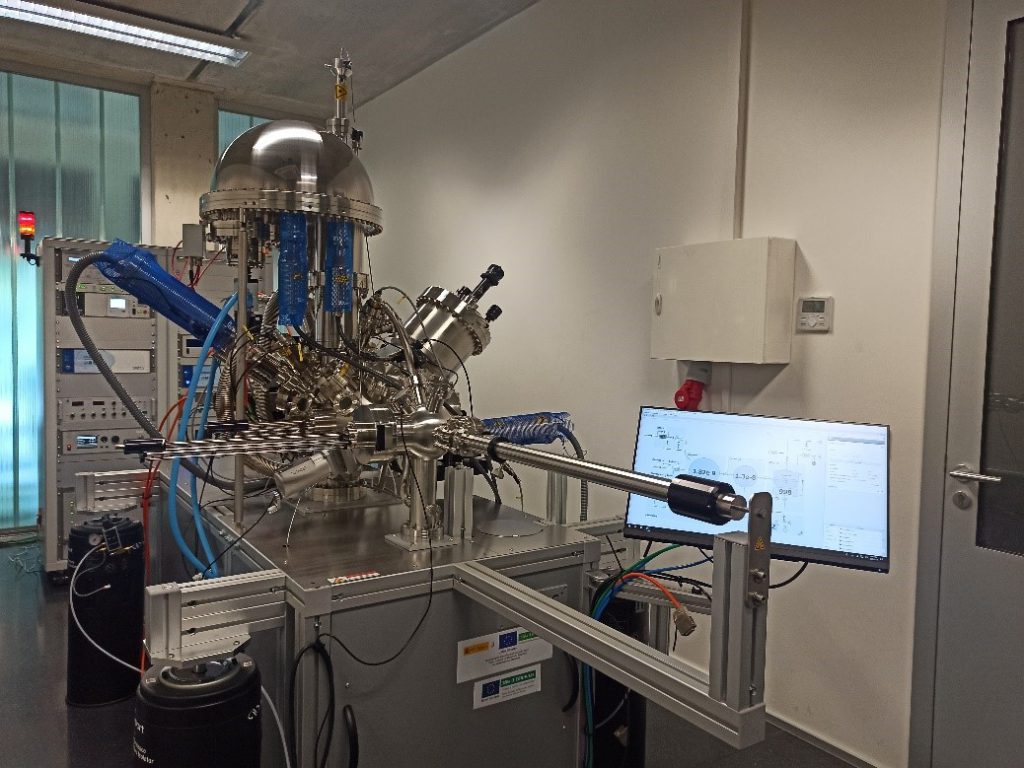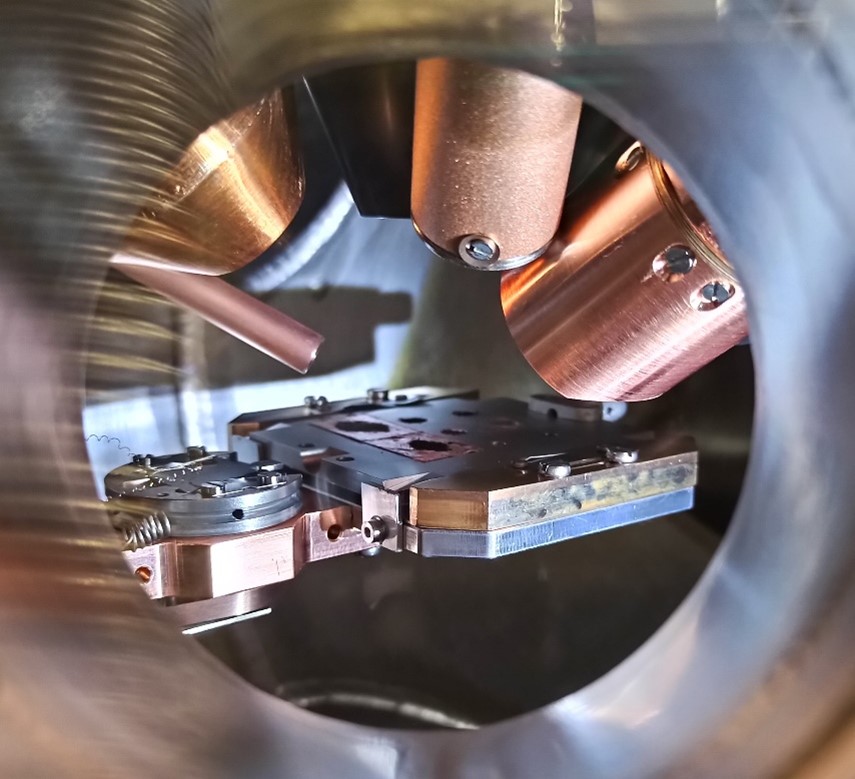U16-E03. X-ray Photoelectron Spectrometer, FlexPS-ARPES-E
X-ray Photoelectron Spectrometer, FlexPS-ARPES-E
Description
X-ray photoelectron spectroscopy, known as XPS or ESCA, is one of the most widely used surface analysis techniques due to the high analytical value of its results and its flexibility in being applied to a wide variety of samples. In this regard, the surface information it provides is highly relevant, as basic XPS analysis offers qualitative and quantitative information on all the elements present on the surface of the studied material, except for hydrogen (H) and helium (He). Additionally, more comprehensive studies can provide detailed information about the surface’s chemistry, organization, and morphology.
Technical Specifications:
The FlexPS-ARPES-E system (SPECS) includes a UHV (ultra-high vacuum) chamber designed with a geometry that allows for the combination of the most common electronic and ionic spectroscopy applications, such as XPS, SEM/SAM (Scanning Electron/Auger scpetroscopy), UPS (Ultraviolet Photoelectron Spectroscopy), and ISS (Ion Scattering Spectroscopy). Therefore, this equipment not only allows for the collection of complete and high-resolution spectra but also includes technology for performing angle-resolved studies on layers and thin films. It also features Auger technology in SEM/SAM for acquiring elemental mappings with high lateral resolution and includes pre-chambers for thermal and gaseous treatments, enabling in situ studies of materials under their real operating conditions.










